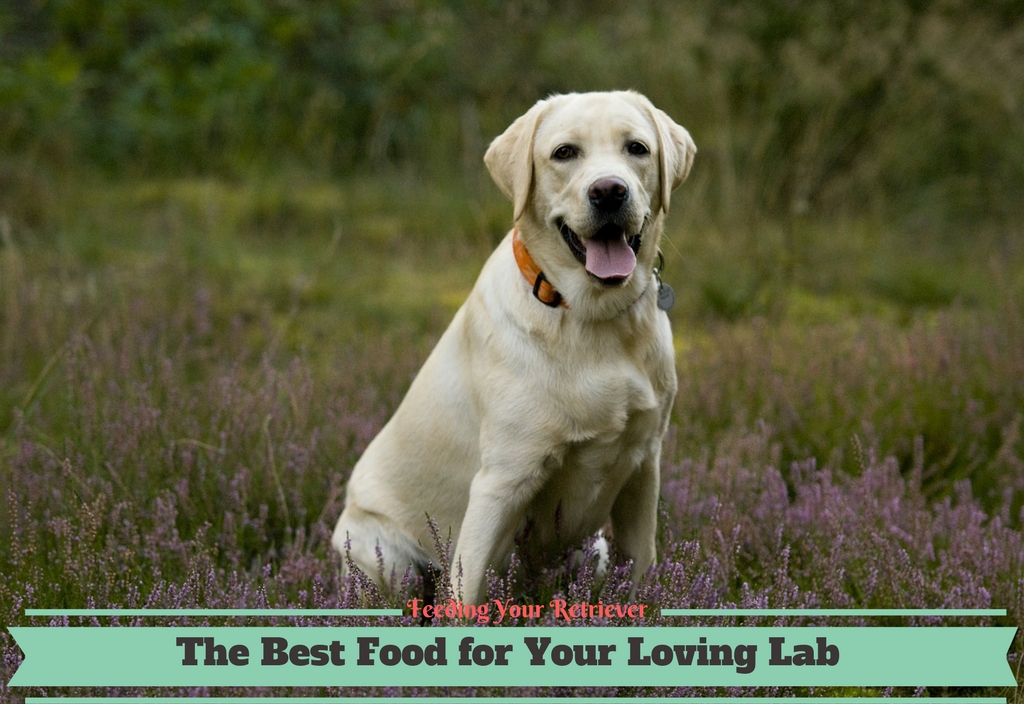
Originally, as their names would suggest, Labrador Retrievers were hunting and fishing dogs used to retrieve prey that their masters had killed. Nowadays, the lab is a favorite breed, both as a family pet and as a guide dog due to their gentle and even temperament.
Of course, like all dog breeds, labs have their own set of challenges and specific nutritional requirements to keep them healthy, happy and feeling their best. So, what does that mean exactly? Well, let’s take a look.
Contents
- Recommended Dog Foods Comparison
- Like Other Breeds, Labs Have Specific Needs
- Different Ways of Feeding Your Dog
- Labrador Dog Food Choices – Dry Kibble
- How Much to Feed Your Hungry Hound
- How Often to Feed Your Labrador
- Best Dog Food for Labs
- 1. Wellness CORE Natural Grain Free Dry Dog Food
- 2. Wilderness Blue Buffalo High Protein Dry Adult Dog Food
- 3. Taste of the Wild, Canine Formula
- 4. Orijen Adult Dog Food
- 5. Fromm Family Foods 33 lb. Gold Nutritionals Dog Food
Recommended Dog Foods Comparison
Last update on 2019-01-04 / Affiliate links / Images from Amazon Product Advertising API
Like Other Breeds, Labs Have Specific Needs
Like most breeds, owners have to spend a little bit of time and research on selecting the right food for their labs. Labs are prone to weight gain and when they have put on an extra bit of pudge, they find it difficult to shed.
The trouble here lies within the fact that labs are also a high-energy breed and, as we know, a proper amount of fat in the diet can be a great source of energy.
Lab puppies should also ideally be fed an adult formula, as they really don’t need the extra fat contained in most puppy formulas and can also grow more quickly than their skeletons, which results in skeletal disorders.
Labs also are not known to need a diet with particular supplements, but anytime a breed has the potential for obesity, extra glucosamine and chondroitin can help prevent joint damage. All dogs can also benefit from fatty acids for a shiny coat and probiotics to ensure healthy gut bacteria.
Different Ways of Feeding Your Dog
There are two main schools of thought when it comes to feeding a Labrador. You can feed your dog kibble or you can feed your dog a raw diet comprised of raw meat and bones. Each has benefits and drawbacks.
On the other hand, there have been cases in the past where recalled dog foods have been responsible for illness or even the death of pets. It is hard to select a good quality dog food and to know what all the ingredients in kibble are.
On the other hand, the price of food, in general, is soaring so feeding your dog a raw meat diet may not suit your budget. It is also difficult to know for certain that your dog is getting all the nutrient he needs. A raw food diet will mean lots of storage space is required and this type of diet will be more time-consuming for you in terms of preparation.
Labrador Dog Food Choices – Dry Kibble
– Is Kibble Healthy?
Dry kibble is a great way to feed any dog and this includes Labradors. Not only is this food easy to access, it is also inexpensive when compared to other diets, like the Raw Food Diet. Kibble is also specially formulated to contain all the protein, fat, and fiber your dog needs, as well as vitamins and minerals in a small, handy package.
Kibble also helps keep your pup’s oral health in tip-top condition as the hard pieces help scrape disease-causing plaque and tartar off your dog’s teeth.
It is safe to say that kibble is great for dogs. However, certain dog food brands have been recalled or to blame for dogs getting sick. Stick to reputable brands and read on to find out which dog food ingredients to avoid when selecting a kibble for your precious pooch.
– Convenient Kibble
Kibble is a very convenient way to feed your dog. After all, it is so easy to find and a great option in terms of price point for feeding your animal. On top of this, you can rest assured that your dog is getting the right amounts of each nutrient by checking the guaranteed analysis on the bag.
Kibble also makes an easy on-the-go treat and is relatively inoffensive when it comes to odor.
– Dog Food Downside
The main disadvantage of kibble is that it is easy for dishonest manufacturers to “hide” things in kibble that you don’t necessarily want your dog eating.
Manufacturers will also sometimes grind up and include inedible parts of animals in kibble, such as beaks and hooves. Any food that has meat by-product marked as an ingredient should be avoided.
In addition, products that use expired meat products or meat products otherwise unsuitable for human consumption, like road kill, should be avoided for a healthy pup. Reading reviews online will often reveal these facts.
How Much to Feed Your Hungry Hound
As labs are prone to carrying a little bit of extra weight around the middle, we recommend that your lab should never be allowed to free feed. Your dog should be fed at set times and set quantities throughout the day.
All dogs’ food will have a suggested feeding quantity printed on the bag. You should use these as guidelines but also use your discretion. If you have an active dog that is at a healthy weight, then, by all means, feed it the recommended portion on the bag.
How Often to Feed Your Labrador
We recommend feeding your lab smaller portions, at least twice a day. This is a great strategy to use from a metabolic point of view since labs are prone to weight gain. Like humans, the more small meals in a day you can provide, the better for weight control and the less likely your dog is to feel hungry and desperate for food, resulting in overeating.
Smaller meals also reduce your dog’s risk of developing bloat. Bloat is a serious life-threatening condition that affects all dog breeds but especially large breeds with deep chests. You can reduce the risk of bloat by making sure plenty of water is accessible, feeding multiple, small meals throughout the day and limiting activity right before and after eating.
Best Dog Food for Labs
1. Wellness CORE Natural Grain Free Dry Dog Food
- Grain Free: 100% Grain Free, Complete And Balanced Everyday Nutrition For Your Dog
- Protein Focused Nutrition: Naturally Grain Free, Rich With Delicious Premium Proteins Including Turkey And Chicken Combined With Real Vegetables And Essential...
Last update on 2019-01-04 / Affiliate links / Images from Amazon Product Advertising API
Wellness Core is a delicious and grain-free dry dog kibble. This dog food contains 34% protein, which is high enough to support a high-energy dog, such as a lab, even if your pet is an active working dog. The high-quality proteins sources are made up of low-fat turkey and chicken, which may be an issue if your dog suffers from allergies but are otherwise fantastic sources of protein.
This dog food hovers around 15% in fat, which is appropriate for a large breed dog that is prone to weight gain. It’s also ideal for a dog on a diet. This doesn’t mean that it skimps of fatty acids, however. This formula contains both omega-3 and 6 which not only promote a shiny coat and healthy skin but also protect the heart.
This dog food also contains high-quality sources of fiber such as potatoes and broccoli. This will help your pup feel fuller for longer as well as keep his bowel regular. Fiber is also extremely important for weight control. On top of the fiber, Wellness Core contains probiotics to aid in healthy digestion.
Finally, this formula contains antioxidants for a strong and healthy immune system and glucosamine to help support healthy joints.
The Bottom Line? This dog food is reasonably priced and contains no harmful fillers or additives. Ideal for a dog on a diet, this high-protein and low-fat formula will allow your dog to stay active and feel full without piling on calories. It also contains fatty acids, antioxidants and is enriched with glucosamine.
| Pros | Cons |
|---|---|
|
|
2. Wilderness Blue Buffalo High Protein Dry Adult Dog Food
- Packaging May Vary
- Contains One (1) 24-Lb Bag Of Blue Wilderness High Protein Grain Free Adult Dry Dog Food, Salmon
Last update on 2019-01-04 / Affiliate links / Images from Amazon Product Advertising API
Blue Buffalo Wilderness is an inexpensive and delicious dry dog kibble. High in protein but completely free of chicken or poultry by-products, this formula will help your dog stay active and energetic without having to worry that your pet is consuming indigestible parts of poultry. Low-fat salmon and chicken meal will help your dog develop and maintain long, lean muscles..
Blue Buffalo is also low in fat sliding in at around 15% fat content, which is ideal for a pup plagued with weight problems. It does, however, contain the necessary essential fatty acids to maintain a healthy coat and moisturized skin.
This formula is free of any wheat, corn, or soy products and also contains no preservatives, artificial colors, or flavors. The exclusive LifeSource bits are cold pressed to maintain maximum potency and provide your dog with vitamins, minerals, and antioxidants for optimal immune system function.
Calcium and phosphorous will help keep your pup’s bones and teeth strong and healthy while glucosamine will help your dog maintain his joints as he ages.
The Bottom Line? This food is cheap and contains high-quality ingredients. Although some dogs don’t like the LifeSource bits, they enrich the food with antioxidants as well as vitamins and minerals such as calcium, phosphorus, and glucosamine for complete joint and bone health. It is also low in fat but high in high-quality proteins and fiber to keep your dogs active all day long.
| Pros | Cons |
|---|---|
|
|
3. Taste of the Wild, Canine Formula
- A taste of the wild with ROASTED BISON; REAL MEAT is the #1 ingredient; optimal amino acid profile, protein rich for LEAN, STRONG MUSCLES
- High protein ingredients with added vitamins & minerals; fruits and vegetables as SUPERFOODS for hard-working ANTIOXIDANTS; fatty acid blend for SKIN & COAT
Last update on 2019-01-04 / Affiliate links / Images from Amazon Product Advertising API
The Taste of the Wild series is a line of delicious, healthy, and inexpensive dog foods that are made to mimic the way a canine would eat in the wild. This dog food is grain-free and comes in several different flavors to satisfy your dog’s palate.
The real roasted meats in the Taste of the Wild provide high levels of protein balanced with moderate fat levels around 18%. Easy to digest, high-quality sources of fiber such as sweet potatoes and peas also provide long-lasting, slow-burning energy, as well as keep him regular and support gut health.
Naturally occurring pre- and pro-biotics also assist in this task and this formula is appropriate for pups with sensitive tummies.
The Taste of the Wild dog food is enriched with essential fatty acids like omega-3 and omega-6. Fatty acids not only keep your dog’s coats looking sleek and his skin healthy, but they also protect and maintain heart health. Fruit and veggie sources of antioxidants like blueberries and raspberries also keep your pet’s immune system in tip-top shape.
The Bottom Line? This grain-free dry dog kibble is reasonably priced and your pup is sure to love the taste of the real roasted meats. This high-protein formula contains delicious bison and venison and has moderate fat content to help support the healthy choices of your dieting dog. It also contains pre and pro-biotics, as well as containing lots of high-quality fiber to help keep your pup’s tummy happy. Antioxidants ensure protection from disease and illness while essential fatty acids maintain heart help and keep skin and coat looking shiny and healthy.
| Pros | Cons |
|---|---|
|
|
4. Orijen Adult Dog Food
- Orijen Adult Dog Food 28.6lb bag
- 28.6 pounds
Last update on 2019-01-04 / Affiliate links / Images from Amazon Product Advertising API
If you are looking to come as close to a raw food diet as you can without in fact feeding a raw food diet, you may have found what you’re looking for in Orijen. This premium dog kibble is high protein and is made up of an impressive 85% meat, to mimic the way your carnivorous canine would nourish itself in the wild.
The 38-44% protein content will help your dog sustain his energy levels all day long, but beware feeding this to a dog that is not full grown as your don’t want to put your pooch at risk of overgrowing and damaging his skeleton.
On top of being just high in protein, 2/3 of the included meats are fresh or raw, meaning that your dog can absorb vitamins and nutrients the way he was intended to. The remaining 1/3 of the meat inclusion is air-dried and all meat products used in Orijen dog food is fit for human consumption.
The meat used in Orijen dog food ranges from tasty red meats like boar and lamb to poultry and fresh eggs and even includes fish. Fish oil is a great source of essential fatty acids that keep the coat shiny, the skin healthy and protected by a moisture barrier and protects your pup’s heart.
Orijen also includes organs and cartilage in their dog kibble formula. OK, so now you might be wondering why this is beneficial to your pet. Well, organ meat actually contains concentrated doses of essential vitamins and minerals as well as amino acids. Cartilage and bone provide your pup with calcium and phosphorous, which helps keep your pup’s bones strong and healthy.
Orijen contains less than 20% carbohydrates. These are derived from high-quality fruit and vegetable sources which help keep your dog’s system running smoothly and support gut health. This formulation also ensures that your pup’s blood sugar levels stay optimal, meaning he has sustainable energy and doesn’t feel hungry.
It also helps him maintain body weight. However, if your lovely lab is prone to weight gain, the 35% fat content on this grain free dog food may be too high for him, unless you feed your pet portion smaller than the recommended dose.
The Bottom Line? This product has won multiple best dog food awards over the years and it’s no wonder: Orijen is grain-free, contains only ingredients fit for human consumption, and mirrors the way a dog would eat in the wild. Orijen comes with a pretty price tag and the fat content is definitely on the high side for a lab, but you can rest assured he is getting all the nutrients he needs in a form as close to raw as possible.
| Pros | Cons |
|---|---|
|
|
5. Fromm Family Foods 33 lb. Gold Nutritionals Dog Food
- Large Breed 50+
- Added cartilage to support joint health.
Last update on 2019-01-04 / Affiliate links / Images from Amazon Product Advertising API
Fromm’s adult dry kibble is specially formulated for dogs over 50 lb. In terms of fat and protein content, this formula has the best combination on this list at 23% protein and 12% fat. This combination will support your dog’s energy levels but will also assist in weight maintenance for your pudge-prone lab.
The protein is derived from low-fat sources such as turkey, chicken, duck, and eggs. This may be a problem if your dog has a poultry allergy but otherwise, these are fantastic quality sources of protein.
Probiotics help your dog to digest his food and assist in maintaining optimal gut health. Salmon oil provides the essential fatty acids your dog need to keep his coat and skin healthy and also protects your pup’s heart. Quality sources of fiber such as flaxseed, barley, and brown rice help your dog to feel satisfied throughout the day and maintain appropriate energy levels.
The Bottom Line? This holistic dog food contains the perfect ratios of protein, fat, and fiber to help keep your dog’s weight woes at bay. Made with high-quality ingredients, this kibble is also inexpensive and will help support your dog’s energy levels and keep his tummy, coat, skin, and heart healthy.
| Pros | Cons |
|---|---|
|
|
All dogs are different and it might take some experimentation to find the ideal food for your lab. Hopefully, this list will give you a good starting point. Your choice will mostly come down to your dog’s personal tastes and needs and your budget.
When selecting a food for your dog, remember that labs—especially as they age—are prone to weight gain. Unless your dog is extremely active, you should select a food that has lower fat levels with enough protein and carbohydrates to support his energy levels.
Any food you select should also be enriched with essential fatty acids and ideally, contains glucosamine and chondroitin. Feed your lab with love. Have you tried any of these foods or do you feel we’ve missed a great product for labs? Let us know in the comments below!
I grew up in a household that was filled with animals. I believe that my fate as a dog-loving person was sealed in early childhood since my parents owned several dogs of varying sizes and breeds. There was no choice but to take care of and learn about dog habits and the best animal care practices — otherwise, I’d be clueless about how to go about the creatures I was surrounded by day and night.
As a life-long puppy lover, I know a thing or two about dogs and how to go about caring for them in the best way possible. Although I’m not a professionally trained dog behaviorist, trainer, or veterinarian, all of my knowledge and experience with canines comes from a place of love and a deep-rooted passion for dogs and animals in general.
Seeing as dogs kept me company throughout every stage of my life, I decided to follow a different path in my academic life and obtained a Bachelor’s and Master’s degrees in Marketing Management and Digital Advertising, which ultimately allowed me to combine my professional training and personal experience by creating the ultimate dog lover’s resource website! Along with my husband, Dave, I run MySweetPuppy for like-minded dog lovers who want to have a single, clear, and reliable information source about anything and everything related to dogs and their well-being.
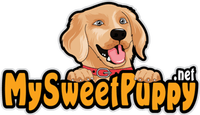
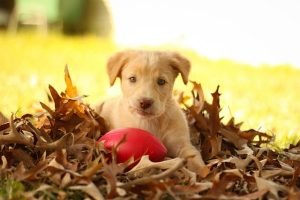
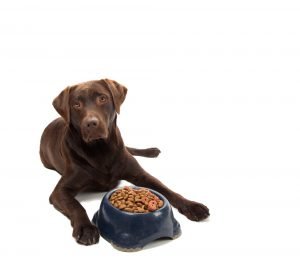
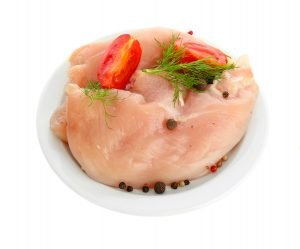





![The Best 4 Low Sodium Dog Foods [2021 Buyer’s Guide]](https://mysweetpuppy.net/wp-content/uploads/2015/12/low-sodium-dog-food1.jpg)

Wow who knew that’s how it works
Thanks for connecting to Mysweetpuppy.net. Please keep in mind that I, Claudia Bensimoun, do not write any of the blogs or reviews on this website, nor have I in the past. I only answer the comments section.
When choosing a high-quality dog food for your furry best friend, always ask yourself these questions:
Is my dog suffering from any health problems? What life stage is he or she at? Veterinarians recommend that dog owners have a better understanding of their dog’s health issues and life stage before choosing a dog food.You may not realize that your dog’s physical well-being depends on what you feed him. Feeding your dogs the right foods will help him or her overcome certain diseases, live a longer and happier life, and even prevent many behavioral problems that may be linked to improper nutrition.
Golden Retrievers are a completely different breed than Labrador Retrievers.
ty
Thanks for connecting to Mysweetpuppy.net. Please keep in mind that I, Claudia Bensimoun, do not write any of the blogs or reviews on this website, nor have I in the past. I only answer the comments section.
There is no best diet, since all dogs have different dietary needs, so it’s always smart to find the best dog food to match each individual dog. That said, consult with your veterinarian for advice when changing Fido’s diet.Each brand of dog food should be chosen with a dog’s unique and specific health needs in mind. Just as we choose different diets to suit our own lifestyles and life stages, the same should be done for our dogs. It’s also wise to examine the nutritional benefits of the dog food that you’re currently feeding. Jot down all the ingredients, caloric content, protein and fat levels, and question whether your dog is currently suffering from any health problems like itchy skin, bloat or diarrhea. Your next step will be to find the ideal food for your dog.
“Artificial ingredients are often highly antagonistic and can actually contribute to an animal’s mental and emotional imbalance,” adds Andi Brown, director of Halo and author of The Whole Pet Diet. “Some additives can be so detrimental that they can actually have the same effect on an animal as hallucinogenic drugs have on people. According to Best Friends Animal Society, the most common reason animals are put down by vets or turned into shelters is because of unruly behavior.” via Animal Wellness. Brown recommends adding minerals and vitamins, especially the full complex of B vitamins, to a dog’s food to help with behavior problems.
“Major nutrients in a healthy, balanced diet for dogs include protein, fats, carbohydrates, fiber, vitamins and minerals and water. A well fed dog needs to eat a variety of foods to get a good range and balance of vitamins and minerals.Choosing premium brands of dog food made with high- quality, easily digestible ingredients is an excellent starting point for ensuring your dog is getting adequate nourishment for his brain as well as his body.It’s also a good idea to switch to healthier treats and supplement foods with cooked sweet potatoes, pumpkin, carrots and green beans. All these provide your dog with extra nutrients.”
For more on my article on how to feed your puppies and dogs, visit:https://animalwellnessmagazine.com/brain-food-for-your-dog/
If you’re wanting to add a healthy South African tea brew like the awesome Rooibos tea, here’s my article about my favorite tea and how to give it to dogs:https://animalwellnessmagazine.com/rooibos-tea-a-healing-brew-for-you-and-your-dog/